Journal list menu
Export Citations
Download PDFs
Cover Picture
Ceramics: Fabrication of Macroscopically Flexible and Highly Porous 3D Semiconductor Networks from Interpenetrating Nanostructures by a Simple Flame Transport Approach (Part. Part. Syst. Charact. 9/2013)
- Page: 731
- First Published: 13 September 2013

Highly porous macroscopic networks built from interpenetrated metal-oxide nano-microstructures allow the utilization of nanoscale properties for macroscopic applications. The image shows interpenetrations between micro tetrapods which are mainly responsible for the un usual network properties like high temperature stability and mechanical flexibility. Networks are realized by a here introduced flame transport synthesis method as reported by Yogendra K. Mishra and co-workers on pages 775.
Back Cover
Polymer Particle: Solvent-Assisted Interfacial Tension Deformation of Spherical Particles for the Fabrication of Non-Spherical Particle Arrays (Part. Part. Syst. Charact. 9/2013)
- Page: 820
- First Published: 13 September 2013
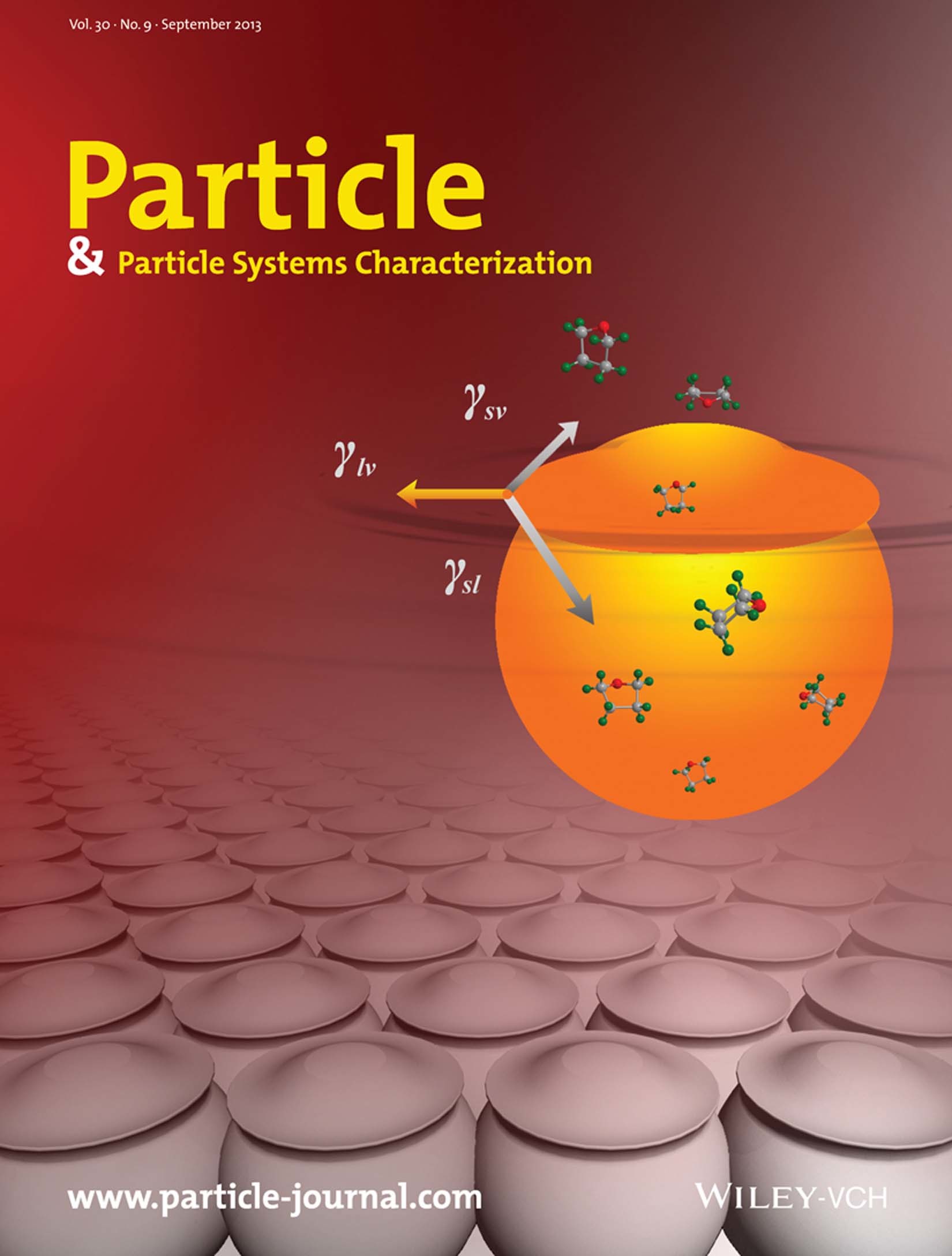
The ordered arrays of anisotropic non-spherical polymer particles are fabricated by interfacial tension deformation of self-assembled spherical polymer particles as described by Qingfeng Yan and their co-workers on page 812. The polymer particles are softened due to the diffusion of solvent molecules into the polymer and subjected to lateral stretches by the interfacial tensions at the three-phase contact line, leading to the formation of asymmetric polymer particle arrays.
Masthead
Contents
Contents: (Part. Part. Syst. Charact. 9/2013)
- Pages: 733-736
- First Published: 13 September 2013
Progress Reports
Nanoparticles Engineering for Lithium-Ion Batteries
- Pages: 737-753
- First Published: 03 June 2013
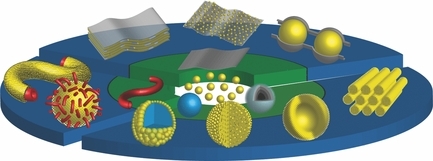
Recent developments in hierarchically nano/microstructured electrode materials assembled from single component, binary to multicomponents building blocks via different driving forces including diverse chemical bonds and non-covalent interactions are discussed. Understanding of nanoparticles’ self-assembly may provide information instructing their organization into large aggregates through low-cost, high-efficiency, and large-scale synthesis.
Communications
Crystalline TiO2 Nanorod Aggregates: Template-Free Fabrication and Efficient Light Harvesting in Dye-Sensitized Solar Cell Applications
- Pages: 754-758
- First Published: 21 May 2013

Crystalline TiO2 nanorod aggregates with a specific surface area greater than 100 m2 g–1 are prepared through a facile template-free process. When used in photoanode, the aggregates demonstrate a superior charge carrier and greatly enhance the light harvest capacity of the sensitized photoanode. A PCE of excess 9.1% measured using a mask (10.5% lacking a mask) is achieved without device optimization.
Magnetic Field-Directed Self-Assembly of Magnetic Nanoparticle Chains in Bulk Polymers
- Pages: 759-763
- First Published: 21 May 2013
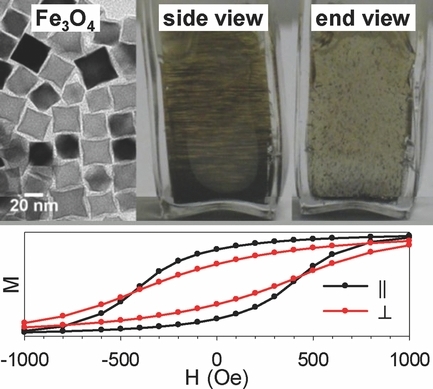
Self-assembled chains of magnetic nanoparticles embedded in a bulk polymer are prepared by thermally curing a dispersion of the nanoparticles in a liquid monomer under the application of a magnetic field. Repulsive forces between the chains cause them to assemble into an array with quasiperiodic, micrometer-scale spacing, and the chains exhibit enhanced magnetic anisotropy along the chain axis.
Direct Synthesis of Graphene Quantum Dots by Chemical Vapor Deposition
- Pages: 764-769
- First Published: 03 June 2013
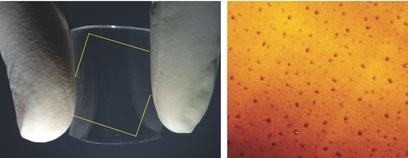
A bottom-up method to fabricate uniformly dispersed graphene quantum dots (GQDs) by atmospheric pressure CVD on copper substrates is reported. The size distribution of the GQDs can be controlled by carefully tuning the CVD growth parameters. Additionally, the GQDs can easily be transferred to other large-scale substrates and the fabrication process is relatively simple and convenient. The GQDs deposited on transparent substrates show well-known excitation-dependent photoluminescence behavior.
pH-Responsive Theranostic Polymer-Caged Nanobins: Enhanced Cytotoxicity and T1 MRI Contrast by Her2 Targeting
- Pages: 770-774
- First Published: 10 July 2013
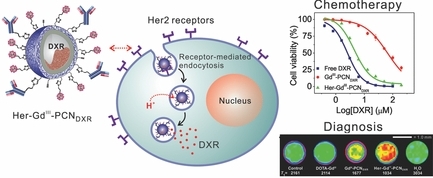
A polymer-caged nanobin (PCN) theranostic platform with a doxorubicin (DXR)-loaded liposomal core and an acid-sensitive polymer shell that is functionalized with herceptin and GdIII-based magnetic resonance imaging (MRI) contrast agents is reported. In vitro testing reveals an 120-fold improvement in cellular GdIII uptake in comparison with clinically approved DOTA-GdIII, leading to significant T1 MRI contrast enhancement.
Fabrication of Macroscopically Flexible and Highly Porous 3D Semiconductor Networks from Interpenetrating Nanostructures by a Simple Flame Transport Approach
- Pages: 775-783
- First Published: 15 July 2013

Flexible, electrically conducting, high temperature stable ceramics with very high porosities are fabricated from interpenetrated metal oxide nano-microstructures in a versatile manner in a novel flame transport synthesis approach. The Young's modulus of these networks can be tuned from wool type to rubber like based on the density, type and interconnections of the building blocks. Semiconducting behavior allows multifunctional applications like the electrical readout of the mechanical history.
Full Papers
Reciprocal Response of Human Oral Epithelial Cells to Internalized Silica Nanoparticles
- Pages: 784-793
- First Published: 21 May 2013
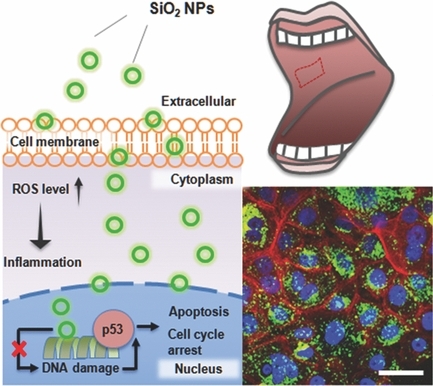
Nano-reciprocity of human oral bucal mucosa epithelial cells (TR146 cells) to silica nanoparticles (SiO2 NPs) is commonly found in consumer products. SiO2 NPs are able to associate, internalize, and translocate into the cell nucleus of TR146 cells, resulting in increased oxidative stress and mild inflammatory responses, but do not induce cell apoptosis or disrupt the cell cycle.
Dual-Polymer-Functionalized Nanoscale Graphene Oxide as a Highly Effective Gene Transfection Agent for Insect Cells with Cell-Type-Dependent Cellular Uptake Mechanisms
- Pages: 794-803
- First Published: 21 May 2013
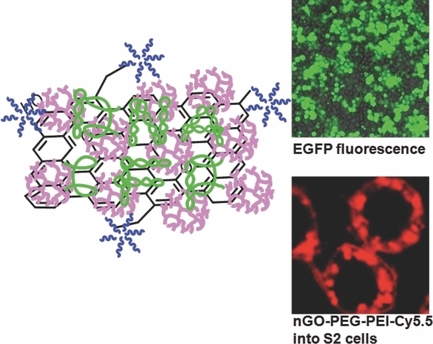
The excellent DNA packing capacity, good stability, low cytotoxicity, and distinctive cellular uptake pathway of a novel dual-polymer-functionalized graphene oxide make it a high efficient nonvarial nanocarrier for DNA transfection into insect cells and possibly other types of cells with similar cell uptake mechanism(s).
Functionalized Ultrabright Fluorescent Mesoporous Silica Nanoparticles
- Pages: 804-811
- First Published: 10 June 2013

The first successful functionalization of ultrabright fluorescent mesoporous silica nanoparticles is reported and the problem of preservation of fluorescent brightness of the particles is solved. Functionalization with amine groups is described. A challenging example of further functionalization with folic acid, which requires organic solvents, is demonstrated.
Solvent-Assisted Interfacial Tension Deformation of Spherical Particles for the Fabrication of Non-Spherical Particle Arrays
- Pages: 812-817
- First Published: 10 July 2013
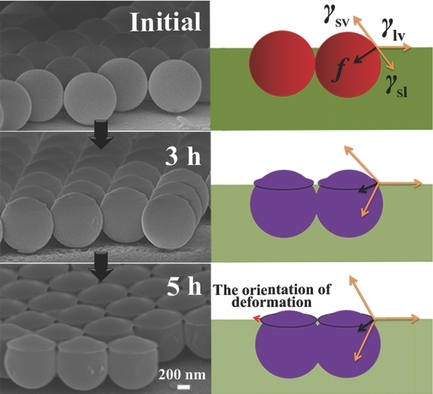
Asymmetric non-spherical polymer particle arrays are fabricated by solvent-assisted interfacial tension deformation of self-assembled spherical polymer particles. The spherical polymer particles are subjected to lateral stretching by the interfacial tension at the three-phase contact line, with the polymer segmental mobility intensified due to the diffusion of solvent molecules into the particles.





